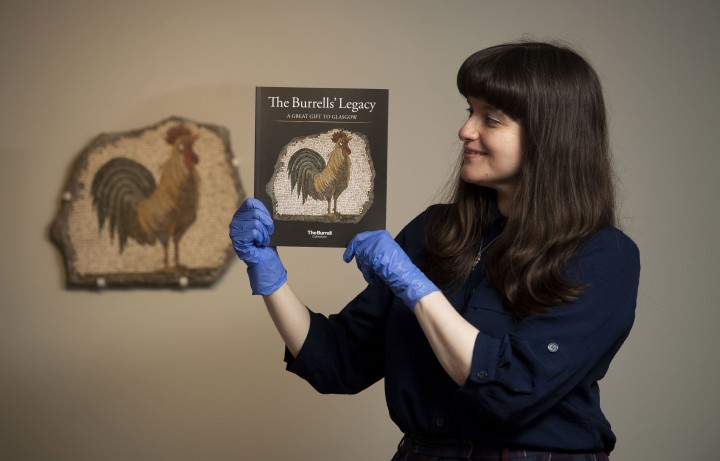Scottish Art News
Latest news
Magazine
News & Press
Publications
The Burrells’ Legacy: A Great Gift to Glasgow
By Susan Mansfield, 08.09.2022

When Tom Honeyman, then director of Glasgow’s Kelvingrove Museum, was invited to a secret meeting with William Burrell in 1943, he had no idea why. He did not expect the shipping magnate to announce that he planned to leave his world-class collection to the city of Glasgow.
That’s just one of the nuggets we learn in the first special exhibition hosted by the Burrell Collection since reopening this spring. It’s an ambitious and sprawling show, a history of the collection which expands on the main displays, adding more treasures from the Burrell store which haven’t been shown for decades.
After that day in 1943, Burrell continued to add to his collection, in fact he redoubled his efforts, particularly in the field of antiquities. Now his collection had a home, an audience, he seemed determined that it would represent the best of world culture. The pencil translations of Egyptian hieroglyphics in the margins of his books are just one indication of his research. There were four Egyptian objects in the collection prior to 1944, now there are 300.
Objects from Greece, Rome, Egypt and Mesopotamia make up some of the first displays in the show; take a moment to be staggered that those stone pendants from Iraq might be 6,000 years old. What follows is as eclectic as the main collection - stained glass, weaponry, Chinese porcelain and so on - with each object or group adding something to the story.
 csg cic glasgow museums collections.jpg) Pages annotated by Sir William Burrell in his personal copy of Greek Pottery, 1948, Arthur Lane Ⓒ CSG CIC Glasgow Museums Collections.
Pages annotated by Sir William Burrell in his personal copy of Greek Pottery, 1948, Arthur Lane Ⓒ CSG CIC Glasgow Museums Collections.
There is stained glass bought from the collection of Burrell’s rival William Randolph Hearst when he fell on hard times in 1937; a tapestry which entered the market through a forced sale of Jewish assets by the Nazis (Glasgow made a payment to the heirs in 2015 to keep it in the collection); a carpet believed to have been a gift from the Shah of Persia to Empress Maria Theresa.
There is a group of French paintings - Daumier, Géricault, Fantin-Latour - including several gifted by Burrell to his local museum in Berwick which are being shown in Glasgow for the first time. We learn that Honeyman argued (unsuccessfully) with Burrell to keep Daubigny’s gorgeous Beach at Villerville in the main collection.
Then the story shifts to the building itself. The show includes several of the unsuccessful entries for the 1970 architectural competition: a building in the shape of three linked cows; a towering concrete edifice which might pass for a grain silo or a power station; a proposal to house the collection underground and top it with five glass domes.
The show is frustratingly lit: one is either squinting to avoid glare or blocking the light with one’s own body. But it is a glorious trove of treasures, a little haphazard, often surprising, much like the main collection, while also telling some of its many stories.
The Burrells’ Legacy: A Great Gift to Glasgow, The Burrell Collection, until Sunday 16 April 2023.






